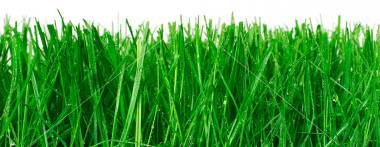
Mulching provides massive benefits to your garden but you do need to investigate which type of mulch material you and your garden require.
Mulch Explained
Mulch is a layer of material, organic or inorganic, that is laid over your planted beds and not dug in. The main benefit of mulching your garden is suppression of weed growth. Although weeds still grow, the extra layer they have to push through weakens them and many will die quickly. The ones that do get through are easier to see and remove. Also, if you choose the right sort of material to cover your garden it will add nutrients to the ground and improve the texture of the soil as it gradually rots down and incorporates over the year.
Mulch also insulates flower beds during the cold winters and keeps soil cool and helps retain moisture in the summer by preventing evaporation.
When to Mulch
Some people prefer to mulch late in the autumn, others wait until early spring. It really depends on your location and soil. If you live in a cold area, with heavy soil then mulching in autumn will lock in some warmth, while chalky or sandy soils that dry out quickly are best mulched in spring to lock in the moisture. Before laying the mulch, make sure the ground is weed free and moist.
Types of Mulch
Many types of mulch exist and you can either buy it ready made or create your own. Apart from plastics and other matting, all are organic and will add bulk and nutrients to the soil. Consideration should be made as to what you want to achieve with your mulch as the material you choose will affect your soil in a number of ways. Each mulch has a different appearance, and this ‘look’ may be more important to you than the benefits.
Plastic sheeting can be used but I would recommend woven mats as they allow drainage are particularly useful for new gardens that have been overgrown with weeds in the past. Although unsightly, they can be disguised by strategic planting and a further covering of a more attractive mulch.
Bark Wood Mulch
Bark Wood is a wonderful addition to heavy soils and is one of the most commonly used mulches. It looks good and is sold in different sized chips: large sizes rot slowly while the smaller grades break down quicker, therefore benefiting your soil more readily. Bark improves the soil structure and is therefore particularly useful for heavy clays. If you have many trees and bushes in your garden you may wish to buy or hire a wood chipper to create your own bark mulch, just ensure you don’t chip diseased branches. The only pitfall to choosing bark is that it will change the acidity of your soil over time, making it slightly more acidic, so make sure you know which plants you wish to encourage.
Manure Mulch
Well rotted manure isn’t the most attractive of mulches but it is the most beneficial to your plants. Depending on your circumstances, you could make a layer of manure and cover it with chipped bark for an extremely efficient and more aesthetically appealing mulch.
Leaf Mulch
Leaf mulch is similar to manure in that its attractiveness is low, but its usefulness is high. If you swept up and bagged your leaves last autumn you will have a ready made compost to add to your garden next year. And good compost itself can be used as a mulch.
Cocoa Mulch
Cocoa mulch made form cocoa shells are popular but have drawbacks. If you have a dog you may find that Rover is very attracted to the scent of the chips but if he eats them, he will get sick. Some people find the sweet smell of cocoa shells attractive while others find it repulsive. If you do use cocoa shells as mulch, water them thoroughly after laying to bind the shells together as they have a habit of blowing away in the wind.
Gravel as Mulch
Gravel or grit won’t improve your soil, but are useful to spread around small areas such as alpine gardens where plants are prone to rot around their base if in contact with too much water.
Other Types of Mulch
Crushed glass, polished pebbles, and crushed shells are being sold now as mulch and while attractive, they are expensive so would look good as a decoration around the tops of planters and tubs.
So, decide on the effect you want in your garden and get your wheel barrow and shovel out. Your garden and flowers will thank you for the attention.

4 Comments
Leave a Reply